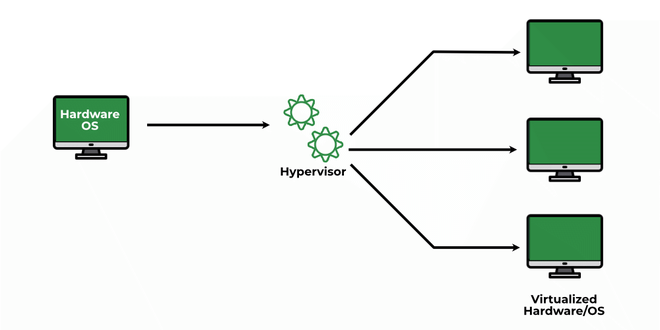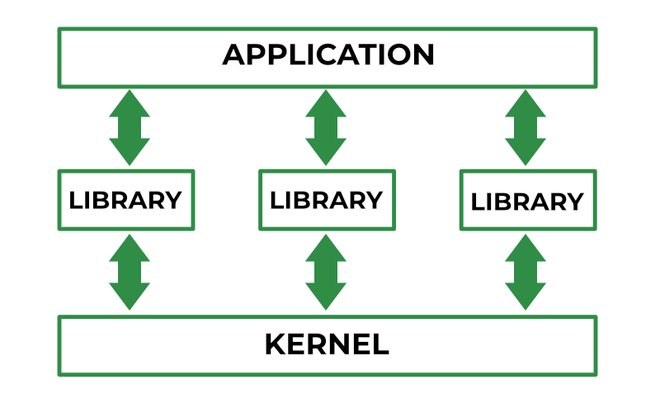Difference Between Hypervisor and Exo-kernel
Last Updated :
13 Mar, 2023
A software or firmware component called a hypervisor is used to build and manage virtual computers A virtual machine manager is called a hypervisor.
By sharing resources like memory and computation, a hypervisor enables a single host computer to handle several virtual machines (VMs). The ability to rapidly construct new virtual machines (VMs) makes it straightforward to assign resources for dynamic workloads. Additionally, because the hypervisor-run virtual machines are not reliant on a particular piece of hardware, workloads and VMs may be readily moved to multiple servers or platforms as needed.
Each guest virtual machine is isolated from other virtual machines, both on the same hardware and elsewhere in the same network, which is another important benefit of hypervisors in a network environment. In this manner, if one VM has a problem, such as a crash or malware attack, that problem won’t impact other VMs or the data on the host hardware.
There are two different kinds of hypervisor
- Type 1(Bare metal hypervisor): Hypervisor type 1 is intrinsic to the hardware of the host.
- Type 2(Hosted hypervisor): A host os is run on top of a type 2 hypervisor.

Hypervisor
What is an Exo-kernel?
The Massachusetts Institute of Technology created the Exo-kernel operating system with the idea of giving the application control.
Exo-Kernel operating systems are designed to manage hardware resources at the application level. Typically, high-level abstractions like file systems are used by operating systems to offer hardware resources to programs. Exokernels are designed to impose as few abstractions as possible on application developers, giving them as much freedom as possible to choose their own hardware abstractions. Exokernel sizes are small because their only functions are resource protection and multiplexing, which are far easier to implement than standard microkernels ‘message passing and monolithic kernels’ high-level abstractions.
The kernel has been updated using the exo-kernel. Exo-kernel specifies their low-level interface and multiplexes the HW resources that are readily available.

Exo-kernel
| Hypervisor |
Exo-kernel |
| A first-class hypervisor is computer software that builds and operates virtual machines while controlling visitors and allowing operating systems to make hardware requests. |
An operating system kernel known as an exokernel allows applications to access hardware directly. |
| It takes care to customize each virtual machine so that issues with one do not influence those with the others. This VM separation keeps them operating at their best. |
Easier development and testing of new operating systems. |
| They ensure quality and make improvements to the product. It protects security architecture tests. |
Applications are permitted to create their own customized memory management scheme. |
| Finding reputable hypervisor services for your specific business requirements within a budget becomes difficult. |
It diminished Consistency. The time slots are combined. |
| Resources abstracted by a hypervisor. |
Resource exposure by Exo-Kernel. |
Like Article
Suggest improvement
Share your thoughts in the comments
Please Login to comment...